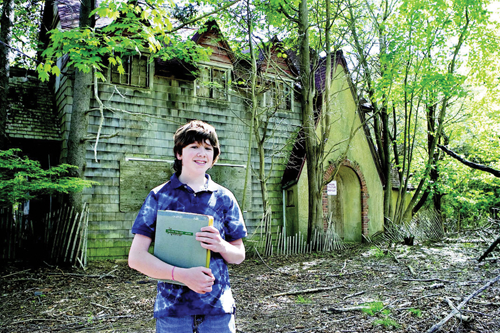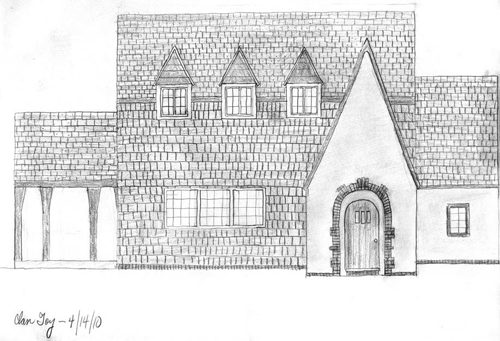Krupski: County prepared to raze ‘Helen Keller house’

It wasn’t known as the Helen Keller house when Maryann Sewell’s family lived there.
Her parents, Hans and Elizabeth Strauss, purchased the Bavarian-style home for $5,000 plus $1 for all the furnishings inside sometime in the early 1940s when she was about 3 or 4 years old. Located just north of Cornell Cooperative Marine Research Center at Cedar Beach in Southold, it was built in the 1920s as part of a subdivision that never fully developed due to the Great Depression.
Helen Keller — who went on to become the first deaf-blind person to earn a college degree and eventually became one of the most famous, admired and celebrated figures in history — and her teacher, Anne Sullivan, may have summered at the house in 1936. It’s the same time and place where the companions, later made famous by the play “The Miracle Worker,” shared time together before Ms. Sullivan died.
Nearly 80 years later, Suffolk County is one permit away from razing the house.
And Ms. Sewell has come to terms with saying goodbye to the place she once called home.
“I think it’s time,” she said in an interview Wednesday. “There’s no way of resurrecting it at this point.”
Legislator Al Krupski (D-Cutchogue) confirmed Wednesday the county has recently submitted an application to the state Department of Environmental Conservation to raze the dilapidated house.
The DEC has jurisdiction since the property is close to the water and no further public hearings are required since the county owns the land, Mr. Krupksi said.
Once approved, he said the county parks department will demolish the house as soon as possible.
“We don’t want someone getting in there and getting hurt,” he said. “I don’t think the county has a million dollars to put into a building that was never put on the historic registry. The problem is we have buildings that county employees are working in that need work. Those are the ones that should be fixed first.”
About five years ago, Ian Toy of Southold, who was 13 at the time, spearheaded a mission to save the house and created a Facebook page Save the Helen Keller House in Southold, NY. He wasn’t immediately available for comment on Wednesday.
Ms. Sewell described Mr. Toy as “valiant” and said she was very impressed by his determination and willingness to support saving the house.
She said she believes the house fell into disrepair when the living room was being used as lab space, instead of having the house used as the county intended, with visiting professors staying there.
“Once my husband and I were trying to get it back from the county when they clearly weren’t doing anything with it, that’s when we found out about the Helen Keller history,” she said.
During those efforts, the county agreed to study the house to determine the feasibility of restoring it. Mr. Krupski said it was decided that same year the house had deteriorated beyond repair.
Not much has happened since those restoration efforts failed, she said.
How the house fell into disrepair started in the mid-1960s when the county took the property from Ms. Sewell’s parents through eminent domain.

“Someone had gotten a deed to the land between the house and the beach and they were going to build a bungalow colony where the marine biology center is now,” Ms. Sewell said. “He ran afoul of the law somewhere and instead of getting involved in court he just gave it to the county. And the county decided everything to the beach side of Sunrise Way is going to be county property.”
The county offered her parents tenancy in the house until their deaths, an offer she said they declined.
The couple purchased a lot adjacent to the house on Sunrise Way and Ms. Sewell said her mother wanted to have the house physically moved there, which never occurred.
Eventually, they purchased another piece of property on Mill Creek, which is where Ms. Sewell and her husband, John, continue to summer. The couple lives in Washington, D.C.
About two years ago, they put the Sunrise Way property up for sale.
As for the house slated for demolition, Ms. Sewell remembers it as “a kid’s heaven,” complete with secret passages, double stairways and a very mysterious attic.
There’s also the story about how the great rum runner Owen Madden may have lived there and allegedly smuggled alcohol through the creek and stored it in the basement.
No one knows how many other tales there are about the house, she said. Every time she drives by it, her heart beats a little louder.
“It’s just a shame to waste a beautiful building like that,” she said. “To not use it when it was taken over and let it die — it’s like taking in a dog and not feeding it. You just don’t do that.”

